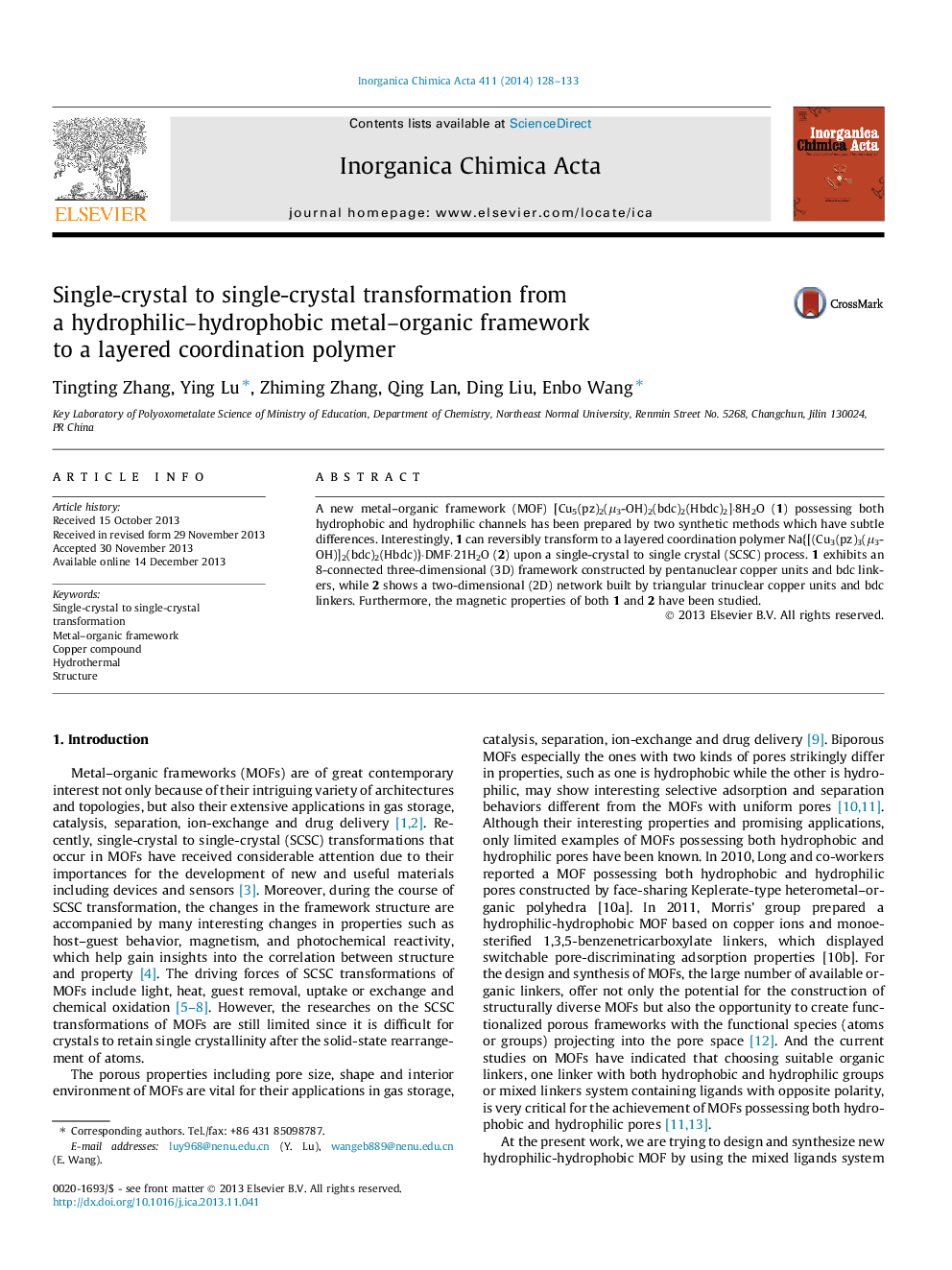| Article ID | Journal | Published Year | Pages | File Type |
|---|---|---|---|---|
| 1306982 | Inorganica Chimica Acta | 2014 | 6 Pages |
•The 3D framework of 1 possesses both hydrophobic and hydrophilic channels.•1 can reversibly transform to 2 upon SCSC process.•Both 1 and 2 were indicated the presence antiferromagnetic interactions.
A new metal–organic framework (MOF) [Cu5(pz)2(μ3-OH)2(bdc)2(Hbdc)2]·8H2O (1) possessing both hydrophobic and hydrophilic channels has been prepared by two synthetic methods which have subtle differences. Interestingly, 1 can reversibly transform to a layered coordination polymer Na{[(Cu3(pz)3(μ3-OH)]2(bdc)2(Hbdc)}·DMF·21H2O (2) upon a single-crystal to single crystal (SCSC) process. 1 exhibits an 8-connected three-dimensional (3D) framework constructed by pentanuclear copper units and bdc linkers, while 2 shows a two-dimensional (2D) network built by triangular trinuclear copper units and bdc linkers. Furthermore, the magnetic properties of both 1 and 2 have been studied.
Graphical abstractThere are two methods to implement the metal–organic framework 1 possessing both hydrophobic and hydrophilic channels, but only one way can achieve the reversible single-crystal to single-crystal transformation from 1 to a layered coordination polymer 2, which cannot be accomplished directly.Figure optionsDownload full-size imageDownload as PowerPoint slide
